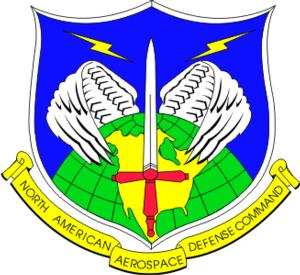Fri, May 30, 2014
Says Taxpayers Spend Millions On Intercept Flights, Infrastructure
NORAD says that it is going out to intercept pilots who have violated restricted airspace more than once per week, and it is costing the taxpayers millions of dollars.

The agency says that the number of incidents is down in recent years because of better outreach programs, but the current level is about what the agency expects into the foreseeable future.
Most intercepts are violations of TRFs, which can crop up on short notice. While more aircraft are being equipped with glass panels that will warn pilots of a TFR on their route of flight, obviously that technology is far from ubiquitous. Steven Armstrong, a NORAD official, said that many pilots are not aware of a TFR being posted, particularly when flying from uncontrolled airports on a flight that requires no flight plan. But showing what appears to be a lack of understanding about GA, he told the Associated Press "They just take off and do what they want."
Why yes ... yes they do.
Armstrong said that intercept flights cost between $10,000 and $20,000 to operate, and alert facilities are budgeted at about $7 million per year. The agency would not say how many alert facilities it currently operates, but at their post-9/11 peak, there were about 26 around the country.
Armstrong said that most pilots who are about to stray into restricted airspace get a warning over the radio, and that is usually enough to get them away from where the government has decided they don't need to be. The agency follows some 1,800 "tracks of interest" each year. He said that if a pilot does not respond to a radio call, the fighters are scrambled before they reach the restricted area if possible. Still, some don't respond to the sight of a jet rocking its wings near their airplane, and require an escort out of the area.
Those pilots are usually in for a session with local and federal law enforcement officials. While few face criminal charges, the FAA can take action up to the suspension of airman privileges.
More News
Known Traffic With respect to ATC clearances, means aircraft whose altitude, position, and intentions are known to ATC.>[...]
Aero Linx: Aviation Suppliers Association (ASA) Established February 25, 1993, the Aviation Suppliers Association (ASA), based in Washington, D.C., is a not-for-profit association,>[...]
Abeam An aircraft is “abeam” a fix, point, or object when that fix, point, or object is approximately 90 degrees to the right or left of the aircraft track. Abeam indic>[...]
Aero Linx: The Air Charter Safety Alliance The group, called the Air Charter Safety Alliance, will raise awareness of illegal charter flights among potential customers, charter bro>[...]
“For months, ALPA has been sounding the alarm on the ongoing efforts by some aircraft manufacturers to remove pilots from the flight deck and replace them with automation. To>[...]
 ANN's Daily Aero-Term (06.10.24): Known Traffic
ANN's Daily Aero-Term (06.10.24): Known Traffic ANN's Daily Aero-Linx (06.10.24)
ANN's Daily Aero-Linx (06.10.24) ANN's Daily Aero-Term (06.11.24): Abeam
ANN's Daily Aero-Term (06.11.24): Abeam ANN's Daily Aero-Linx (06.11.24)
ANN's Daily Aero-Linx (06.11.24) Aero-News: Quote of the Day (06.11.24)
Aero-News: Quote of the Day (06.11.24)



